Tomorrow will mark two years of the New Florence Substack, and I’ll post one final piece for 2024. This is my effort to write a definitive piece about the Boom Generation.
The 22nd generation since that of Columbus and da Vinci was named after their large birthrate. The Baby Boom. Today there are about 53 million American Boomers born from 1943 to 1959 and hundreds of millions more around the world. They are now age 64 to 80, so their legacy is far from complete; they remain in many public offices and other positions of leadership and influence.
Boomers are the first generation of Americans the majority of whom went onto higher education right after graduating high school. Coming of age beginning in the mid-1960s, Boomers let out a primal scream against cultural programming, values-free institutions, and their hyper-masculine Big Band fathers.
They have always been a generation of individualists, spiritual seekers, and harsh judges of right and wrong. First-wave Boomers were the clenched-fist radicals of the Sixties. In the Seventies, Boomers ushered in the age of health foods, alternative medicine, yoga, and self-empowerment.
Since the Boom Awakening (or Consciousness Revolution) began in the mid-1960s, tens of millions of Boomers have sought psychospiritual breakthroughs to reach their inner core of integrity and strength. By the 1990s, two out of three Boomers said they’d been touched by a supernatural power.
Along the way, across the decades, through all their quests for meaning, Boomers have made it comfortable to talk about mindfulness, autonomy, empowerment, wellness, healing, transformation, self-actualization, wholeness, and enlightenment.
With their critical thinking and inner fervor, Boomers have never shied away from honest confrontation. Boomers ask pointed moral questions and challenge any institution that flattens human interiors. Instead, millions of Boomers have sought the enduring and the sacred, the holistic and the integrative, the organic and the planetary.
Across four decades, the Boom Awakening and the Boom-driven Culture Wars also divided people.
On one side were the Boomers’ trippy tribe of hippies and (later) millions of mystics — with their meditation, yoga, Tai Ch’i, and Zen.
On the other side were the Boomers’ millions of energized evangelical Christians — with their vivid, potent, and compelling worship services, their binding standards, and their discerning judgments.
During the Culture Wars that began in the mid-1980s, America split into bicoastal (mystical) multiculturalists and heartland (evangelical) traditionalists. Boom America split between Red States and Blue States almost entirely on spiritual experiences and cultural values — and America has stayed split.
Let’s start with music.
Musically, the Boomers have been the generation of classic rock: Boston, Jackson Browne, the Eagles, Fleetwood Mac, Billy Joel, Elton John, Journey, Pink Floyd, Bruce Springsteen, Styx, Van Halen, Van Morrison, and The Who.
Boomers also brought us the highly innovative music of the Police and Sting, David Bowie, Peter Gabriel, Kate Bush, and the Waterboys, as well as the mystical folk music of John Denver, the reggae of Bob Marley, and the Gospel music of Michael W. Smith.
Three of my six favorite famous Boomers are musicians.
I appreciate John Denver more for who he was as a human being than for his music.
However, I listen regularly to his Rhymes and Reasons. I listen to him play the guitar as he sings poignantly of the innocent wisdom of children and how it can comfort us, clear up the clouds for us, bless us, and lead us by both hand and heart to a better life. Even when the sun’s fading, even when it’s cold as winter, even when cities crumble and towers fall, children can move us beyond our hopelessness and fear and revive our dreams.
Rocky Mountain High has been part of my life since I was a boy. You could hardly turn on the radio in the mid-1970s without hearing John Denver singing about walking amongst mountain forests and lakes and streams, seeking solitude and serenity and grace. And about seeing far amidst the silver clouds and starlight that alternate between being “softer than a lullaby” and meteor showers “rainin’ fire in the sky”.
Second, Elton John.
Your Song is a quiet ballad of a gentle, innocent, earnest, pensive, even bashful and shy guy who aspires to a loving relationship and who’s struggling to express his affections. Quite powerful. Simple, warm, charming, lilting, languid, haunting — a timeless song.
The Greatest Discovery is touching and uplifting. It takes you straight into the heart of a toddler as he encounters for the first time his newborn brother. You see through the boy’s eyes and hear through his ears. The song transports you right into his experience — his ears hearing strange sounds from the baby, his eyes full of excitement, a parent lifting him through the air, his puzzled head tipped to one side. And here’s your brand-new brother.
Rocket Man is based on a short story by Ray Bradbury – about an astronaut who’s lonely on Mars and yearns to be back home with his wife and kids. It evokes the sound of movement through space. It’s a sweet sound, and stunningly ingenious. The song is transcendent — an ode for the ages.
Tiny Dancer is a perfect song. An innovative arrangement with flawless lyrics and rhythm, a delicate melody, and virtuoso singing. It starts simple and by the second verse it’s epochal. This will remain one of the standard songs in rock music. For a century or more to come, you won’t have one of the all-time greatest rock songs unless you match Tiny Dancer or get close.
Daniel – a song for the departing of a brother or anyone we love — is poignant. Right up there with the best things Elton John and Bernie Taupin (who wrote the lyrics to all these songs) have done.
Skyline Pigeon sweeps me away. It’s about moving beyond our limiting cages, spreading our wings, flying free, and fulfilling our dreams. Evocative, soaring, uplifting — a hymn of real depth, kinda heavenly.
Philadelphia Freedom shows off Elton’s giftedness as a vocalist is world-class. His phrasing is perfect and he punches out Phil-a-del-phi-a like a sports chant. The song’s got pump.
Someone Saved My Life Tonight: The music just keeps getting better throughout the six minutes. It’s a magnificent anthem – beautiful, dramatic, and moving – about being rescued from a bad relationship or from being suicidal or both. It’s about flying away from darkness, from being on the verge, into sweet freedom. Pure genius, pure gold. Incredible musical virtuosity. It’s brilliant in every way and powerful on every level.
And third, Peter Gabriel. It would be an understatement to say that Peter Gabriel is my favorite famous Boomer of all time.
I’ve written about my number one Peter Gabriel song, Biko.
I’ve written about his extraordinary 1989 album / C.D., Passion.
I’ve written about his 2023 album, a work of genius created in his seventies. I/O.
Let me focus again here just on my second favorite to seventh favorite Peter Gabriel songs, in much less detail than in my original piece about these six songs.
An epic in five minutes. I find it brilliant, with a sensitivity to it, and beauty, and not just genius but wisdom. It starts with a quiet warning, builds as it goes, and ends big.
I experience Peter Gabriel as he experiences what the poet Anne Sexton experienced. Sometimes the gentle, lilting rhythm draws me into a mesmerizing trance. The song carries me into something sacred and toward something Divine. And I find myself experiencing a catharsis. It’s a therapeutic song, a healing song, that leaves me reaching for connection – connection to something beyond myself and connection with my fellow human beings.
5. “Red Rain”
For starters, it has that unique Brazilian rhythm. And Peter’s singing voice comes together with the instruments perfectly. There is the passion and the complex emotions: mystery, comfort, warmth – the way the song soothes you even as it hits you in the gut with reality. The song invites us to let go of some our own painful thoughts and feelings. Take what’s been festering, take what we’ve been repressing and denying, and bring some of it out. And let it rain down into our conscious awareness.
We listen to Gabriel express what it’s like to grow up strong and wanted, taught to win, thinking you’ll never fail – and then to lose, to not be needed, to have your dreams desert you, and to not be able to take it anymore. And we listen to Kate Bush express what a friend or spouse or loved one would say: let go of your worry, let go of your shame, remember that your friends are still proud of you and that there’s still a place in this world where we belong.
It’s a poignant, soulful song with a powerful message: Whatever life’s throwing at you, whatever you’re going through, no matter how much you’re struggling, look up and see who’s standing by your side. From our lowest points and hardest times, each of us can find new purpose in this world.
A masterwork. We hear elevation, illumination, an affirmative anthem — even something sacred, something transcendent, a mystical vision in which Gabriel broke through to a new level of consciousness.
The part about the journey home, being guided home, seems to be about home as returning to a spiritual state. I hear him stepping across the threshold into the next journey in his life. Faith in a new beginning and a new guiding vision. It’s an awakening into a freer being.
He had transcendent experiences, some kind of revelations, and he came out more enlightened, strengthened, full of joy. This song is sublime.
We listen to Peter Gabriel sing about feeling lost and empty behind his façade. But when he lets go of his pride, and reaches out from deep within himself, he feels a resolution and completion. Like doorways to churches, in other person’s eyes he finds light and heat and reaches out to touch that light and heat.
The song seems most fitting to a romantic relationship – to two lovers. But it can be found at the promise for a deeper presence in all our relationships – at least when both persons are reaching toward some kind of spiritual transcendence. Or it can even be about love between a human being and the Divine Being. It is a hymn is about the ineffable sense of fulfillment two beings can find when they enter into a deeper presence with each other.
In literature, the Boomers are the generation of novelists Tom Clancy, Steven King, Alice Walker, and T.C. Boyle as well as playwright August Wilson.
Among actors, Boomer men are well represented by Kevin Costner, Tom Selleck, Tom Hanks, Mel Gibson, Richard Gere, Michael Douglas, Michael Keaton, Samuel L. Jackson, Tommy Lee Jones, Willem Dafoe, Denzel Washington, and, above all, Robin Williams. Boomer women are well represented by Kim Basinger, Angela Bassett, Annette Benning, Glenn Close, Diane Keaton, Susan Saranden, Sigourney Weaver, and, above all, Meryl Streep.
In addition to Robin Williams, major Boomer comedians and comic actors have included Chevy Chase, Billy Crystal, Whoopi Goldberg, Howie Mandel, Steve Martin, Jerry Seinfeld, and TV hosts Jay Leno, David Letterman, Bill Maher, Dennis Miller, and Ellen DeGeneres.
Robin Williams, the great improvisational actor and comedian of the 20th Century and early 21st Century, has amazed us all with his non-stop zap-zap-zap wit and performances.
In college, Robin took an improv class and knew that’s what he was meant to do. In the 1970s, he worked on his high-energy free-association act in comedy clubs. Then millions of us encountered Williams as an alien on Happy Days.
By Fall 1978, ABC had built a whole show around Williams’s unique gifts. In Mork and Mindy — an instant smash hit — writers supplied Williams with a bare-bones outline, leaving him free to improvise. He did.
Mork’s rubbery features, odd gestures, vocal imitations, word plays, and made-up word (for hello, “na-nu, na-nu”) looked like total freedom of character — but there was great discipline behind it. Besides the zaniness, Williams brought to Mork an endearing manner, sweet innocence, enthusiasm, and a knack for looking at the world in all its glory.
Even in major movies like Good Morning Vietnam, Aladdin, Mrs. Doubtfire, and Patch Adams, Williams was left free to improvise. Williams drew crowds to movie theaters — producing blockbusters — and garnered several Academy Awards nominations (including for Dead Poets Society) for his breadth of talent, his charm and wit, and his grace and gifts, especially for his gift for performing in flow.
The Boomers’ major filmmakers have included James Cameron, Spike Lee, Oliver Stone, George Lucas, and Steven Spielberg.
The most successful filmmaker of all time has been Steven Spielberg. As with his blockbusters Jaws, E.T., the Indiana Jones series, Jurassic Park, and Men in Black, Spielberg has made most of his movies to please people. But he has also brought us the pain of slavery in Amistad, the abomination of the Holocaust in Schindler’s List, and the horrors of World War II battles in Saving Private Ryan.
In his sentiments and sensibilities, Spielberg seems free of irony or cynicism. Most Spielberg films involve innocence, nostalgia, yearning for home, hope, and optimism. In most Spielberg films, there is a spirit of exuberance, populism, decency, and reverence — and usually some courage and some ingenuity.
About 1.5 billion people watched Bob Geldof’s July 1985 Live Aid telecast for Ethiopian famine relief — and turned “We Are the World” into a planet-wide anthem.
On TV, beginning in the mid-1980s, Oprah Winfrey led daytime ratings as she brought intimacy and empathy to the talk-show format. Her rapport, her immediacy, and her focus on personal issues created a revealing, confessional atmosphere — all embedded in positive thinking with spiritual uplift.
Boomers have had a massive impact on our daily lives through digital technology.
Nolan Bushnell invented the first computer game, founded Atari, and launched the videogame industry in 1972.
At Harvard in early 1975, Paul Allen, Bill Gates, and Monte Davidoff developed a software program that turned the first personal computer into a useful machine. Soon their company, Microsoft, produced MS-DOS followed by MS Excel and MS Word — clunky products outcompeted by Lotus and WordPerfect. But eventually Microsoft products achieved near-monopoly status on essential PC software along with its Windows operating system.
In the Bay Area in 1975 and 1976, Steve Jobs and Steve Wozniak developed their first Apple computer. Later, inspired by undeveloped prototypes at Xerox labs, Steve Jobs and Apple developed graphical user interfaces with a mouse.
In 1989, with leadership by Senator Al Gore Jr., the federal government privatized the Internet. This was completed in 1995.
In 1991, Tim Berners-Lee completed his software for creating online documents with hypertext links — with a system for online addresses and rules for linking and transporting online pages. The World Wide Web was born.
Since the early 1990s, we’ve had Tim Berners-Lee’s Web software with browsers (hypertext readers). It hasn’t mattered what form information is in or where in the world it is. We just point our mouse on a word or an image and click.
For a third of a century now, browsing Web documents, people anywhere on our planet — without complicated commands — have been able to receive text, graphics, pictures, and sound (and, a bit more recently, video). And the information arrives with links to related material, allowing us to move easily and quickly to whatever interests us next.
In 1995 came the “modem Christmas” and the Internet was off to the races. The dot.com boom became the American economic boom of the late 1990s.
In psychology, major Boom thinkers include Howard Gardner on intelligence, Daniel Goleman on emotions, Stuart Hameroff on the brain and consciousness, and Michael Hutchison on brain capacities.
The world’s leading living thinker, quite arguably, is a Boomer. Ken Wilber focuses on the development of the human being across the lifespan in a way that includes the transpersonal domain of human consciousness. We could call him a developmentalist transpersonal philosopher — the first in the history of the world. I’ll have much more to say about Wilber in January 2025 and beyond.
And we have Boom visionaries William Strauss and Neil Howe to thank for anchoring us in historical time — for enabling us to see the Parade of generations with clarity and find our place in it.
As Strauss and Howe so ably delineated in their 2000 book Millennials Rising, the main impact of the Boom Culture Wars was on children and youth, on whose lives Boomers have left a profound legacy: advances in child safety, lead-free rooms, youth anti-tobacco ads, enforced child support, a crackdown on child abuse, teen curfews, unpaid leave for maternity and major family illnesses, and (via Tipper Gore) ratings systems to alert parents to sexual and violent content in music, movies, TV shows, and videogames.
In the Eighties, Boomer parents wrapped a protective blanket around babies and children, and tried to take the danger out of their daily lives. “Baby on Board” signs showed up in back car windows coast to coast beginning in the early ‘80s. These were followed by a dizzying array of child-proof and child safety devices: drawer latches, stove knob covers, furniture corner cushions, infant car seats, kid-proof pill caps, and bike helmets and knee and elbow pads.
At the movie theaters, there came the cuddly baby movies: She’s Having a Baby, Three Men and a Baby, Baby Boom, Raising Arizona, and For Keeps. And there came the string of smart, noble child epics: The Lion King, An American Tail, Oliver and Company, and The Land Before Time.
By the late Eighties, polls showed “staying home with family” tripling in popularity. Then came Bruce Willis’s Lamaze class, Jane Pauley’s twins, and fathers demanding “daddy track” work schedules. By ‘93, nine out of ten fathers were attending the births of their children, compared to one out of ten in ‘75. By the mid-’90s, seven out of ten men said they’d give up some of their pay for more time with their families.
Beginning with U.S. Secretary of Education William Bennett’s leadership in 1985, Boomers have led America’s Culture Wars, primarily as battles to clean up the world of children and youth. Across all 50 states and D.C., the battle of the 1980s was a battle about character education, civic education, and academic standards – and Bill Bennett fought the battle head-to-head on multiple fronts at the same time.
Bennett wanted to see American public schools get back to teaching values like personal responsibility, self-discipline, hard work, honesty, friendship, and love of family and country. He believed that every student, by high school at the latest, should be familiar with the leaders of America’s founding and the key documents and debates surrounding it, and how our political and civic institutions work in this Republic. He believed that every American student should encounter the ideas and ideals contained in the great works of Western civilization and of American history, including the works of James Madison, Abraham Lincoln, and Martin Luther King, Jr.
In the mid-1980s, states enacted some 3,000 separate school reform measures. Most of these involved new curricular and achievement standards within the work of the “excellence movement”.
The Bennett Revolution had a deep impact. In 1982, only 13 percent of American public high school graduates had taken four years of English and three years each of math, science, and social studies. By 1987, 29 percent were doing so.
William Bennett has always had a simple message: Adults should teach children and youth how to read, speak, write, compute, reason, analyze, comprehend, and solve problems. And adults should teach children and youth how to be responsible, self-regulating, hard-working, honest, trustworthy, courteous, and respectful of other people.
In The Devaluing of America, his 1992 memoir of his nine years in federal office, Bennett expressed it this way: “What determines a young person’s behavior are his deeply held convictions and beliefs. Nature abhors a vacuum; so does a child’s soul. If that soul is not filled with noble sentiments, with virtue, if we do not attend to the ‘better angels of our nature’, it will be filled with something else.”
In our K-12 schools, Boomers raised academic and behavioral standards and established school security, Zero-Tolerance school discipline, character education, and school dress codes and uniforms. At all levels of U.S. government, Boomers raised spending on education, pre-school, childcare, after-school, and child health programs — and they provided bigger federal child tax credits.
In the 1990s, American parents made unprecedented efforts to steer children and youth away from alcohol and drug abuse, teen pregnancy, and excessive TV. We tried to screen out the worst of the culture with V-chips on TVs and kiddie-block software on the Net. After school each school day, both structure and attentive supervision were far more common. As a result, Millennials have turned out much differently than GenXers.
Since their first Earth Day in April 1970 and their major backpacking nature treks in the 1970s, Boomers have mainstreamed the Green agenda. They have confronted the dangers of toxic synthetic chemicals in our homes, offices, cars, food, and drinking water — and of artificial lights and e-m fields.
To halt and reverse ozone and fossil-fuel depletion and global climate change, Boom leaders have secured a ban on CFCs, cut sulfur and mercury emissions, and moved us toward clean electricity and fuel. Internationally, most Boom leaders have also worked to reduce carbon dioxide emissions. Many Boomers urge decisive, even painful, action to end and reverse global climate change.
At their best, Boomers have provided America with conviction and a quest for a common vision of the good life. At their worst, they have been bitterly confrontational, delivered ultimatums, reveled in visions of catastrophe, broken down our institutions, and sharply divided our society.
Boom leaders have included Bennett and Gore as well as Bill and Hillary Clinton, George W. Bush, Tony Blair, Newt Gingrich, and Rudy Giuliani — a passionate bunch, burning with an inner fire and often leading from ironclad principles. And Boom leaders include Donald Trump, whose first inaugural address made the fiery promise to bring “American Carnage” to an end. No one quite knows what his second term will bring, but everyone expects radical and probably disruptive change.
In 2025, the oldest Boomers are turning 82 and the youngest are turning 64. After a lifetime of scripture reading and mystical experiences, prayer and meditation, rituals and contemplation, homilies and sermonizing, self-discovery and reflection on values, concerts and sacred gatherings, spiritual journeys and vision quests, what our Boom elders have to offer us is unique.
In our time, Neil Howe observes in his 2023 book The Fourth Turning, Boomers have “focused on issuing unyielding standards of social rectitude to the rising Millennial Generation – aging progressives doing this mostly in colleges, aging evangelicals mostly in churches”.
At their best, Boom elders are principled, noble, visionary, and resolute. At their best, Boom elders are sages and seers, “wisdom keepers” with spiritual gifts and higher insight — feeding back into society their firm standards. At their best, Boom elders are trustworthy, reliable, patient, persevering, and selfless — and they are helping to sacralize our communities.
Our Boom elders may still help turn the crossing of a historical painful threshold into a purifying transformation. But they may also be of such uncompromising, unyielding rectitude and zeal that they may still take a challenging historical situation and make it much worse.
We can all hope that Boomers will remain guardians and stewards of civilization, beacons of the next Golden Age, definers of enduring core principles, stewards of a more sacred civic order. We can all hope that Boomers exit the world heroically, and reach their collective deathbed knowing they fulfilled their mission and legacy to posterity.
Boomers may still have something to teach us about inner vision, conscious living, and self-actualization. Let’s take the time to listen when our Boom elders urge us toward good character and a wise and principled life. Most of these values-based visions will be drawn from the depths of our cultural heritage.




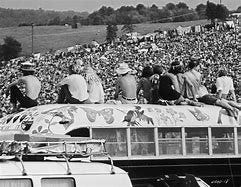










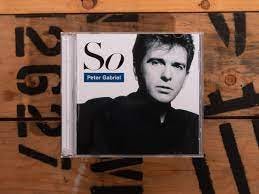
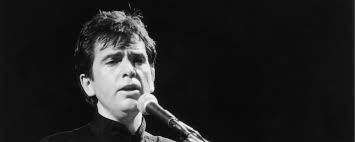
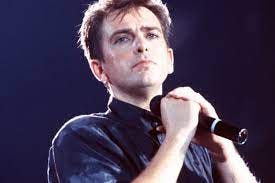

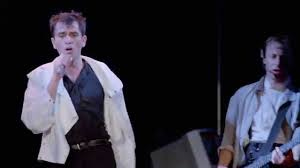
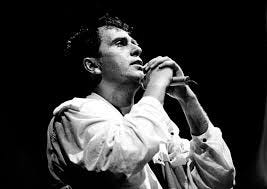
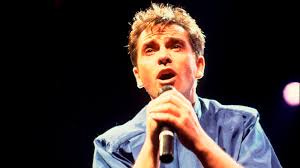























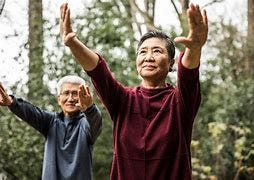


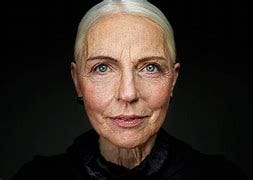
Wow, you went into a lot of detail here. I never get tired of John Denver's voice. Take Me Home, Country Roads is a regular on the playlist while driving.
Mike, I love it! You have captured the period quite Well. I am a boomer and i have Great memories of my life. Thanks for such a eonderful gift!! Francisco.